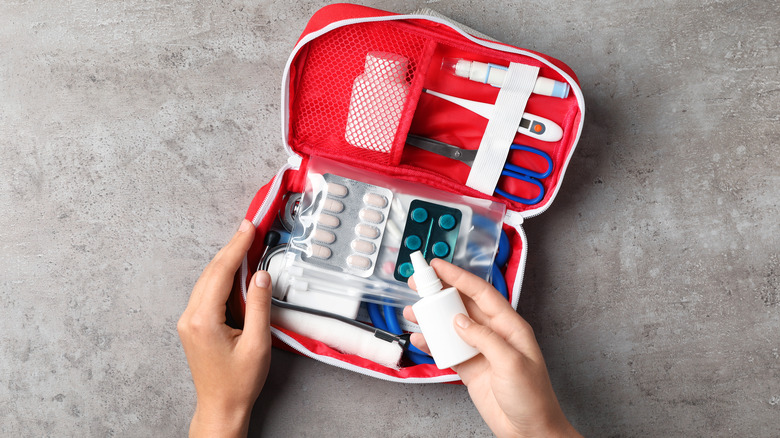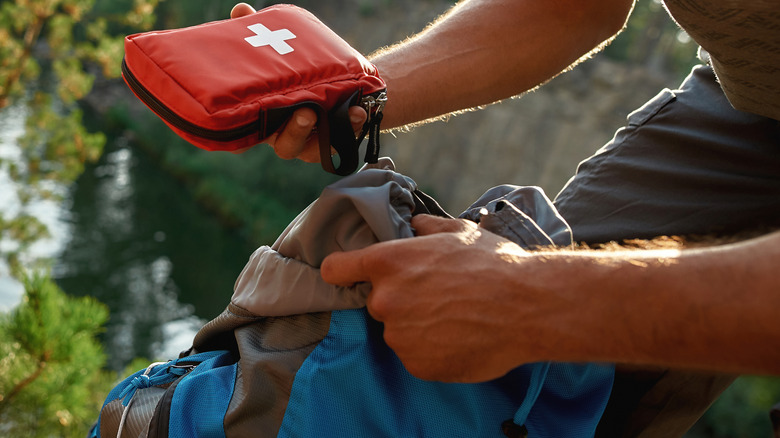This Is What Should Really Be In Your First Aid Kit
A first aid kit can be a lifesaver, and it is good to have one in both your home and car (per Red Cross). You can find first aid kits small enough to fit into a backpack, or you can make your own out of a small fishing tackle box. Regardless of how big your kit is, there are some items it should always contain.
For a well-prepared first aid kit, the Red Cross recommends antibiotic ointment, antiseptic wipe packets, hydrocortisone ointment packets, aspirin, two absorbent compress dressings, cloth tape, adhesive bandages in various sizes, an emergency blanket, instant cold compress, breathing barrier with a one-way valve, nonlatex gloves, a roll of gauze, sterile gauze pads, a thermometer, a sling bandage, safety pins, and a pair of tweezers. Additionally, if you have family members with special needs or medical conditions, you should pack any extra supplies they may need in case of an emergency (via VeryWell Health).
Other items to consider for your first aid kit
If you have extra room in your first aid kit, you could also include a finger splint, eyewash solution, cotton balls, cotton swabs, and some kind of saline solution to rinse a wound (via Mayo Clinic). Moreover, it doesn't hurt to have some hand sanitizer, hydrogen peroxide, petroleum jelly, plastic bags, scissors, super glue, and duct tape on hand. Something else you might consider is putting an old cell phone with a solar charger in or near your first aid kit because you can always dial 911 without needing a service provider (via VeryWell Health).
Keeping a first aid kit in your home and car is a good first step, but you should think of having one during a variety of other activities This includes boating, hiking, and anywhere else an accident might occur. For example, it would not hurt to keep one in your garage, workshop, shed, and boat. It is also important to always know where your kit is, so you won't waste valuable time looking for it when you need it.


